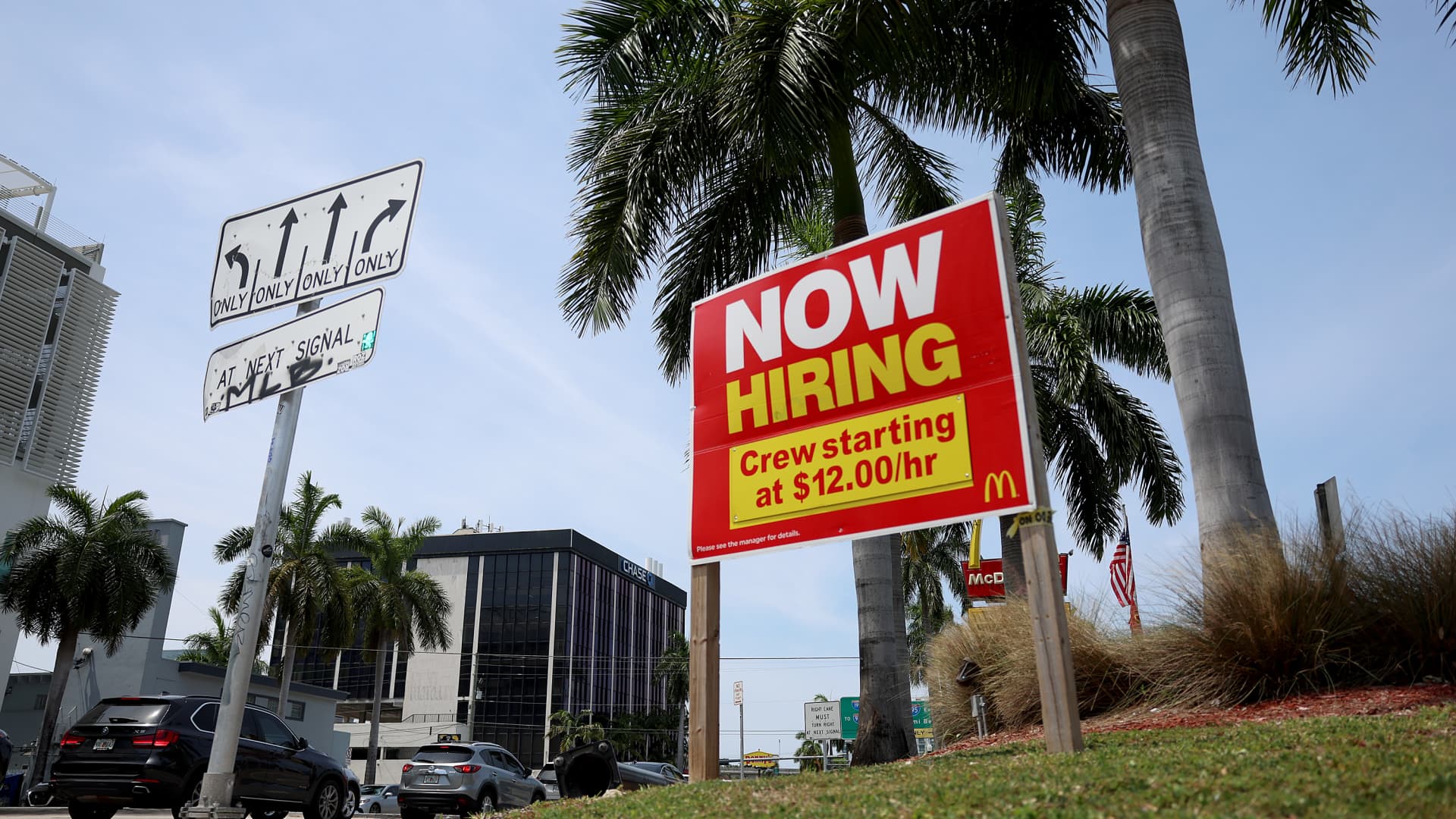A sign posted outside a restaurant looking to hire workers in Miami, May 5, 2023.
Joe Raedle | Getty Images News | Getty Images
The gap between wage growth and inflation is closing.
But it may take time for workers to fully recover from the fastest jump in prices in 40 years.
“Hopefully, before too long, we’ll get to a point where pay completely makes up for the lost ground,” said Sarah Foster, economic analyst at Bankrate. “But it’s not quite there yet.”
The gap between wage growth and inflation is on pace to fully close in the fourth quarter of 2024, according to new Bankrate research.
The consumer price index, a government inflation measure, has risen 17.5% since the pandemic, while wage growth on average has only grown slightly more than that, according to Julia Pollak, chief economist at ZipRecruiter.
Workers should ideally get annual increases to keep up with inflation and to account for productivity growth, Pollak said. Before the pandemic, that worked out to 3.5% — with 2% for inflation and 1.5% for productivity.
From 2013 to 2019, wages grew faster than inflation, on average, she said. But since the pandemic, wages have only grown about as fast as inflation, on average.
“Workers have not seen their purchasing power expand each year,” Pollak said. “They’re just kind of treading water.”
Who is benefiting from higher pay
Yet workers are starting to get a chance to catch up.
The economy has been “surprisingly resilient” and the job market has stayed strong, Foster noted, even as interest rates have climbed and inflation has slowed.
In May, wages began rising faster than inflation for the first time in years, according to Bankrate.
Meanwhile, wages rose 4.4% in July compared to a year ago, while prices were up just 3.2% in the same period.
The trend is expected to continue when August inflation data is released in the coming week, according to Bankrate.
If you were working in an industry that was struggling to find enough workers to fill the demand there, you’re probably the one who is reaping the biggest benefits of higher pay.
Sarah Foster
economic analyst at Bankrate
But there’s a “massive variation across industries” when it comes to wage gains, Pollak noted.
Industries where wages are rising at a quicker rate, according to Bankrate, include accommodation and food services, up 19.6% since January 2021; leisure and hospitality, up 18.9%; and retail, up 16%.
Other areas are lagging, with education workers seeing just an 8.6% pay increase since January 2021, while financials are up 10.2%; construction, 11%; and manufacturing, 11.7%.
The pace at which different sectors increased was largely based on labor demand and supply, and how much those matched up with each other, according to Foster.
“If you were working in an industry that was struggling to find enough workers to fill the demand there, you’re probably the one who is reaping the biggest benefits of higher pay,” Foster said.
Low-wage workers doing in-person jobs were particularly likely to see wage increases, Pollak noted.
‘Still quite a degree of job switching’
The “great resignation” or “great reshuffle,” where workers quit their jobs to find better opportunities, has mostly come to an end, according to Pollak.
But workers are still advocating for their rights when it comes to pay and other benefits.
“We’ve seen the summer of strikes, with more people absent from work for labor actions than in a decade,” Pollak said.
All workers, not just union members, are making their demands known, she noted. And workers are still leaving for other jobs that offer better pay.
“There’s still quite a degree of job switching taking place with people pursuing those increases,” Pollak said.
Image and article originally from www.cnbc.com. Read the original article here.

